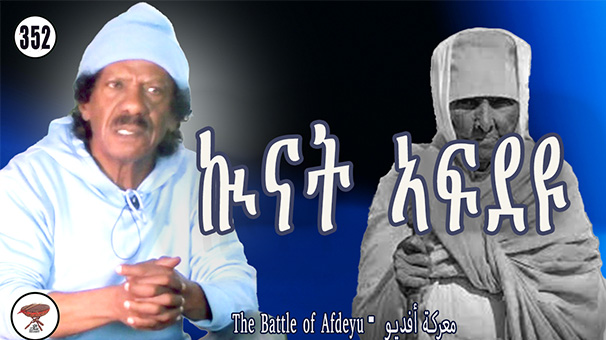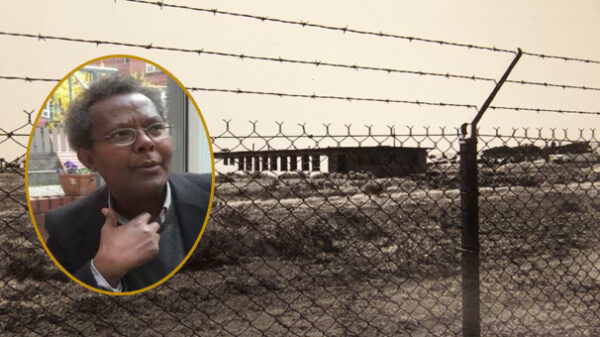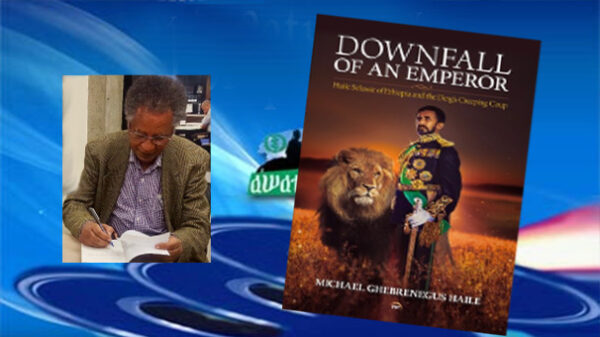The Battle of Afdeyu
The previous night we met Petros Solomon and Ali Sayed Abdella, and I discovered the much hoped for dialogue for uniting the ELF and PLF was rejected. The ominous disclosure devastated me. And we returned to Weki. The next morning, we were having tea for breakfast when our breakfast was interrupted. We rushed toward the battleground.
The intense cracking of gunfire and the occasional mortar rockets sounded close; the fighting was taking place near Weki along the Keren–Asmara asphalt road.
The ELF was stationed to the east of the road, while the PLF was to the west of it. We had likened the dividing asphalt road to the Bar Lev Line, the ceasefire barrier that separated Israeli and Egyptian forces after the Six-Day War.
Afabet
For some time, PLF forces had been bombing the Ethiopian garrison in Afabet, a town about 170 km from Asmara through Keren. The Afabet garrison sent an SOS to the command post of the Ethiopian Second Division in Asmara. A support force was dispatched to relieve the garrison but was ambushed and attacked by the two forces on the road near Afdeyu and Shemanegus. They pounded the convoy from both sides, putting the Ethiopian army inside a trap. A relentless battle raged all day; we rushed to the battleground.
I felt like a babysitter, making sure Nicholas and Jerom stayed safe. Nicholas carried his television camera and other gear and went further toward the front lines with the help of some combatants. I lost contact with him and lagged with Jerome, continually insisting that he stay close to me. He had been grumpy ever since meeting a French-speaking combatant—he shouted defiantly, “You are not my commander!”
Afdeyu is located atop an imposing hill. We approached it from the back, crossing a ravine and an empty field as mortar bombs dropped dangerously close to our path. I was frustrated with Jerome. “I am responsible for your safety,” I said. “Be careful—don’t run aimlessly from one side to the other.” I warned him to stay close until we reach a safe position on the hill.
“Merd!” he muttered angrily in French.
I knew the Italian version of the vulgar word, and an apt response came naturally to my tongue: “Figlio di cane!”
He must have sensed my anger and quieted down.
We climbed the hill, where a commander sat perched on a low wall at the highest point of Afdeyu. He had a bird’s-eye view of the battlefield and didn’t seem pleased with our intrusion. When Jerome tried to film, the commander told him, “You can’t get good shots from here; your camera doesn’t have a telephoto lens.” I didn’t know what that meant, but I didn’t ask. The commander pointed to a position below, and Jerom followed a combatant toward the defenses. The commander gestured for me to join him behind the wall—bullets were raining on us. I was looking for Jerom and made sure he was okay.
A short while later, fighter jets roared above and bombed our position. I ran up the hill, and I jumped for cover; something slashed my pants like a blade. I saw a small cut and some blood just above my kneecap, but it was a slight injury and didn’t bother me.
I joined the commander behind the wall and fixed my eyes on the battleground below. Fighter planes roared overhead, bombing both sides of the road.
Behind the wall defense, I met a combatant I knew, and we squatted behind the wall together. It was then I realized the commander was none other than Dr. Eyob Gebrelul. We stayed with him through the air and land bombardment.
A few hours later, I felt a tingling pain from the small wound, and my leg kept swelling. By afternoon, the swelling was so bad that my pants couldn’t stretch more to fit my swollen leg. Dr. Eyob ordered a combatant to take me down to the medics. I protested. “I can’t leave the battlefield!” It was considered embarrassing to withdraw from a battle. He smiled and said, “You will have more battles; worry about the bullet, which could be poisoned and may cause gangrene.” I knew what gangrene meant—and I didn’t want a small wound to cost me my leg.
I limped, walked painfully, and rolled down the hill until I reached the gorge. I had glanced at Jerome, who was safely behind some rocks. At least he was safe.
At the gorge I met Mohammed Said Barih, a member of the PLF leadership whom I had known as a boy. His arm was wrapped in gauze, and he was clearly in pain. I greeted him, though I doubted he’d recognize me.
We joined other wounded combatants and were taken to a clinic in Zagir. It was teeming with injured and recuperating fighters. There, I properly introduced myself to the late Mohammed Said Barih by mentioning my father’s name. As I expected, he exclaimed, “You are that little kid?”
I wish I had stayed that kid—but no more.
Zaghir Clinic
The clinic was uneventful: pain, blood, and anger—mostly cursing the wounds that kept combatants from their comrades. By evening, laughter and jokes returned, except for a few cadres who were fond of lecturing on courage, perseverance, and camaraderie—but mainly on ideologies and theories. I was fine until some learned I was from the ELF. I avoided arguments about which organization was more nationalist, as if only jingoist partisans could be patriots. One rude combatant wouldn’t stop pestering me for being “Amma,” a derogatory term for ELF. But the clinic was fun.
My wound healed quickly, but most of the other patients were transferred elsewhere, and I met new people daily. In a few days, I was discharged. I wanted to see Nicholas and Jerom, whom I knew were in Weki. I walked there, limping in pain, and found them. Jerom had probably captured print-worthy shots—he looked happier and less arrogant, but still volatile. “Unlike the useless weeks with ELF, we saw action under the PLF on the second day of our arrival; c’est merveilleux,” he said. He had become more partisan than the partisans themselves.
Nicholas told me they had decided to return home through PLF-held areas, crossing to Sudan via Kerora. I felt like they were defecting to the PLF.
In the afternoon, I headed west. The surroundings were calm after the last battle. I walked on, painfully limping. This time I had to return alone, without the two “guests” I had accompanied to the Karneshim area.
Recrossing the Bar Lev Line and Meeting a Nun
Elderly monks and nuns often walk with canes—it seems almost compulsory. I later learned the cane is a symbolic imitation of Jesus the shepherd guiding his flock, which is why even healthy preachers use one, mainly while at the pulpit.
That afternoon, I limped back toward the “Bar Lev Line,” the Asmara–Keren Road. I felt exhausted; I had to stop often to rest. Below the village of Afdeyu, I met a nun (hermitess?) resting on the roadside. I greeted her and squatted beside her.
A short while later, I saw T’amerat, an ELF combatant I knew, walking by. He must have been visiting relatives, or perhaps he was from the area. T’amerat had been the administrator of the political office under Ibrahim Toteel, director of the ELF political department. After the ELF disintegrated, he joined the EPLF and held a senior position—until 2013, when he and others were imprisoned; to date, their whereabouts remain unknown. We exchanged pleasantries for a short time, and he disappeared behind the hills. Years ago, he lived in Germany, but I haven’t heard of him since then. I hope he’s doing well.
As I stood to leave, the nun rose too. She took my hand and insisted I take her staff. I refused, but she wouldn’t budge. “I am close to home,” she said, “and I am not limping like you.”
The nun’s kindness will always remain in my memory. I walked more comfortably after that until I met my commander, Hamid Mahmoud, in Meqerka. I reported to him about my trip, and he joked, “You left with four heads, and now you return with only your own.”
I am glad my head is intact.





Awate Forum